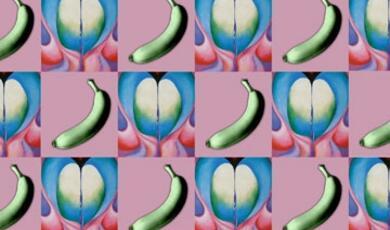What is the mathematical significance of certain prehistoric objects that have been unearthed in northern Scotland? This lecture is given by Tony Mann, Head of Mathematical Sciences at the University of Greenwich.
Friday 6 May 2011
Early Mathematics Day
The MacPlatonic Solids
Tony Mann, University of Greenwich
When the idea of a meeting on the subject of “Early Mathematics” was first mooted, there was considerable enthusiasm, but it quickly became clear that we all had different ideas of what “early mathematics” we might be considering. As it has turned out, with the inaugural Neumann Prize having been awarded to Reviel Netz and William Noel for their excellent book on the Archimedes Codex, and this meeting providing a suitable opportunity for its presentation, I feel that we have taken “Early Mathematics” in the spirit of “Early Music”, as covering anything which the performers feel comes under that heading. (The latest piece I have heard performed in an early music festival was, we were told, written “last week”.)
Approaching the history of mathematics is difficult because evidence is often incomplete, because the culture is different from ours and because (as with early music) we cannot approach the subject in ignorance of developments that have occurred since the period in question. All of these problems are even more evident in “early mathematics”.
The main subject of this talk are remarkable neolithic carved stone balls found in north-east Scotland, which date from 3200-2500BCE. They are about three inches in diameter (remarkably uniform in this respect) and are carved with patterns and knobs in symmetrical shapes. Over four hundred have been found, mainly in Aberdeenshire.
What seems particularly exciting to mathematicians about these balls is the symmetry of the carving. The majority have (in modern terms) the symmetries of the cube – the six knobs corresponding to the six faces of a cube. Some have tetrahedral symmetry, and examples of octahedral, icosahedral and dodecahedral symmetry have been found.
The so-called Platonic solids are the five regular convex polyhedral – the tetrahedron, cube, octahedron, dodecahedron and icosahedron. The historian Proclus, in the fifth century CE, attributed their discovery to Pythagoras, but others credit Plato’s contemporary Theaetetus, who described all five and proved that no others exist. They are famously described in Plato’s Timaeus (about 360BCE), where they are matched with the four elements.
One might conclude that the ancient people who made the objects found in Scotland were aware of the five regular Platonic solids. Balls which can be matched to each of the five have been found, so presumably MacPlato knew of the five regular shapes more than two thousand years before Plato. And since no regular Platonic solids other than these five have yet been unearthed, it seems reasonable to suppose that MacPlato knew there were no others.
Clearly MacPlato was interested in symmetry. The modern mathematician studies symmetry through group theory, so one might ask how far MacPlato got into this area of abstract algebra. He or she must have been keen on classification, because they classified the Platonic solids, but there is no evidence that they anticipated late twentieth-century group theorists in investigating the sporadic finite simple groups.
Well, the last bit is clearly ridiculous. When a twenty-first century mathematician sees a symmetrical object they naturally think of group theory. But, although we cannot know how MacPlato thought of the symmetry of his or her objects, it seems unlikely that a group-theoretic approach would have been involved.
And in the same way we cannot know what, if anything, MacPlato knew about what we now call the Platonic solids. Not all the balls have the symmetries of regular Platonic polyhedral. Some have five, seven or nine knobs; some have many more (one has been found with 160 knobs).
What was their purpose? Mathematical models illustrating the symmetry of regular polyhedra? Well, this seems only slightly less plausible than some of the other theories! These objects have not been found in graves, suggesting that they were not personal possessions. Were they weapons, like a bolas, with leather thongs tied round the knobs? Did they have some function as weights or measures? Were they used in early ball games? Could they have been used as rollers to transport large stones? Were they “sink stones” for fishing nets? Passed round a meeting to indicate the “right to speak”? Or thrown to see which way they landed, as oracles? (Icosahedral dice from Egypt, from the Hellenistic or early Roman period, are currently on display at the Barber Institute in an exhibition of objects from the Myers Collection.)
I have a personal footnote to add. Some years ago there was a mention of these objects on the (now sadly defunct) historia-matematica mathematics history email list. The National Museum of Scotland sells a postcard showing some of their collection of balls and I offered to send copies to list members who were interested. When I went to the Museum to buy a supply of cards I found, next to them, a postcard showing nineteenth-century carpet bowls decorated with very similar patterns. So my conjecture is that these were Neolithic carpet-bowls. Since I’m not aware that previous scholars have even been aware that these people had carpets, this opens up a whole new picture of life in Neolithic Scotland!
And these mysterious and evocative objects continue to inspire. For a very late twentieth-century example, go to the Edinburgh International Conference Centre, opposite the Usher Hall, where you will find a sculptural installation “First Conundrum” (2000) by Remco de Fouw, which consists of polyhedral balls based on these Neolithic examples. And other echoes can be found in the work of sculptors like Peter Randall-Page.
Another interesting class of prehistoric object are the Palaeolithic hand-axes found in large numbers in Europe, Africa and Northern Asia. These are objects with sharp edges, made by knapping, which fit comfortably into a hand. Again there is uncertainty as to their use. IT seems likely that they were used in butchery, and experiments have shown that they work well for that, particularly in providing access to the bone marrow. There is an alternative hypothesis that these were “killer frisbees”.
However, of the many hand-axes found, very few show signs of use. Another theory is that they were objects made by males to impress females: the ability to make an effective, symmetrical hand-axe showed the practical skills females were looking for in a mate, and the large numbers of pristine hand-axes found can be seen as supporting this hypothesis (if you wanted to impress a Palaeolithic woman, you had to make the hand-axe in her presence, to show that you hadn’t just picked up one made by someone else).
A curious property of these hand-axes, however, is that they function as rattlebacks – strange objects that, balanced on a pivot point, have a preferred direction of rotation. If you set them spinning in the wrong direction, they will end up rotating the other way, in apparent contradiction of the law of conservation of angular momentum.
Rattlebacks are also known as celts, which is another name for a hand-axe:
Behold the mysterious celt,
with a property that amuses.
One way it will spin,
the other way it refuses.
Such objects fascinate mathematicians, who have only recently come to understand the dynamics of the rattleback (papers were published in the 1980s by Sir Hermann Bondi of Cambridge and Mont Hubbard of the University of California).
Was this property of interest to the original makers of hand-axes? Were they even aware of it? Was that, perhaps, why they were made? Were they puzzles and toys for Stone Age mathematicians?
As we’ll be hearing this afternoon, modern science has given us remarkable insights into another ancient relic, the Antikythera Mechanism. It would be nice to think that, some day, we will know more about these mysterious objects. Until that unlikely event, while we might like to imagine some mathematical kinship with the long-ago makers, we know that is fanciful. But we can still enjoy these objects as someone who knows the work of Beethoven and Schoenberg can still enjoy Bach and Mozart, even without original ears.
References:
The National Museums Scotland website http://www.nms.ac.uk/ has information and pictures about its collection of carved balls. For handaxes, see Marek Kohn, As we know it: coming to terms with an evolved mind (Granta, 1999)


 Login
Login







